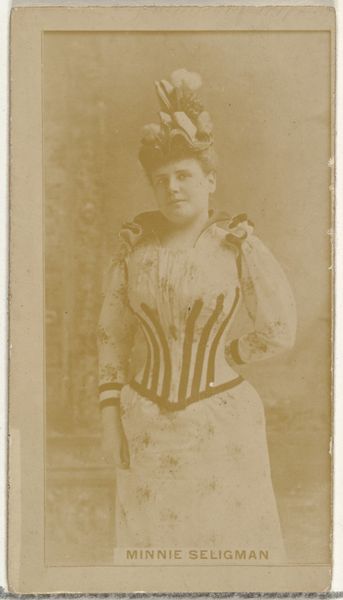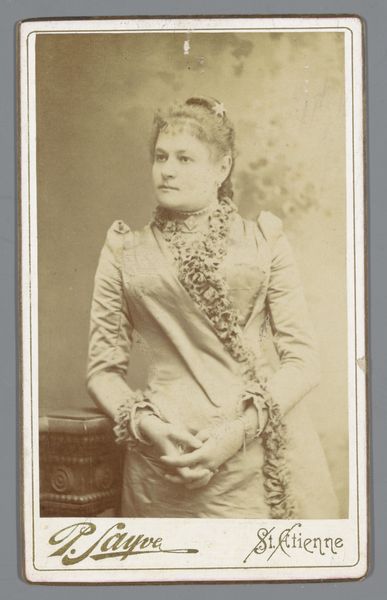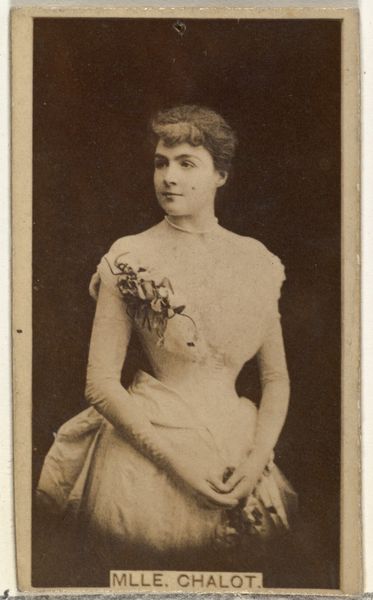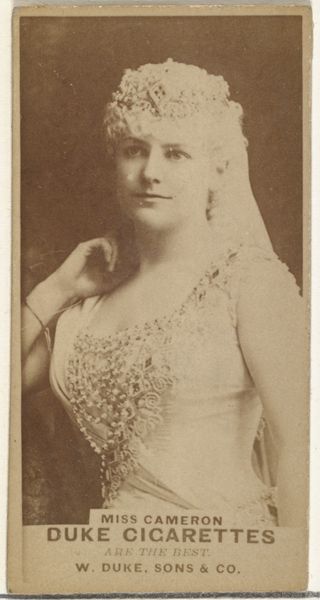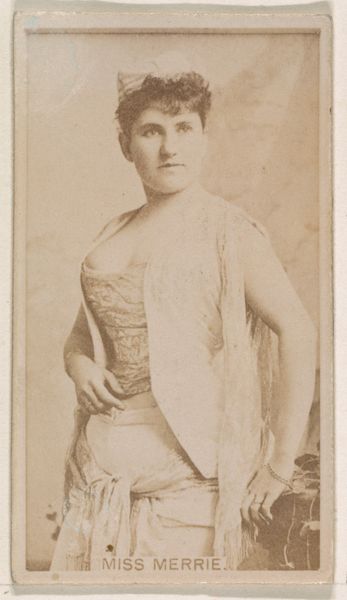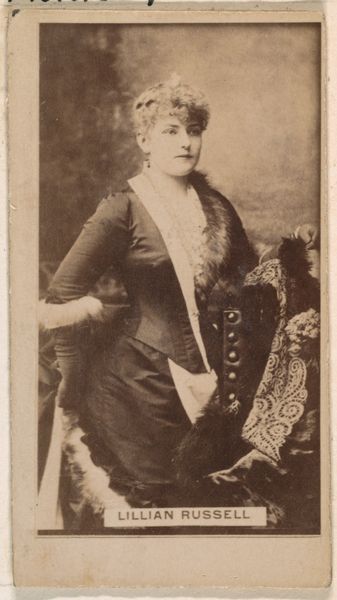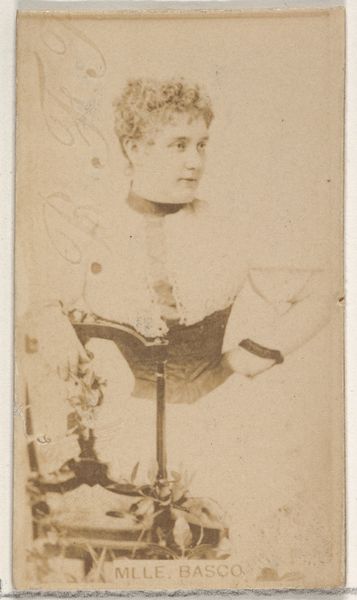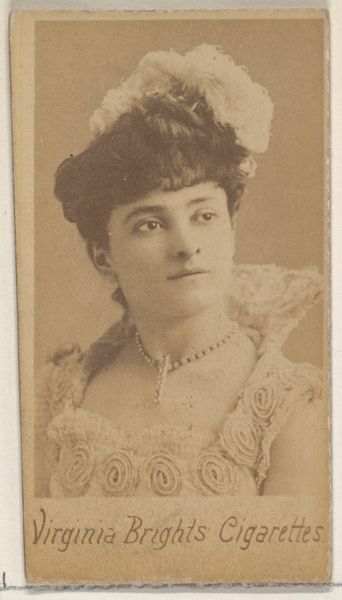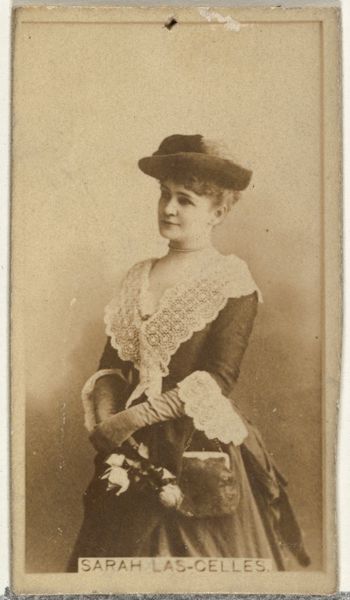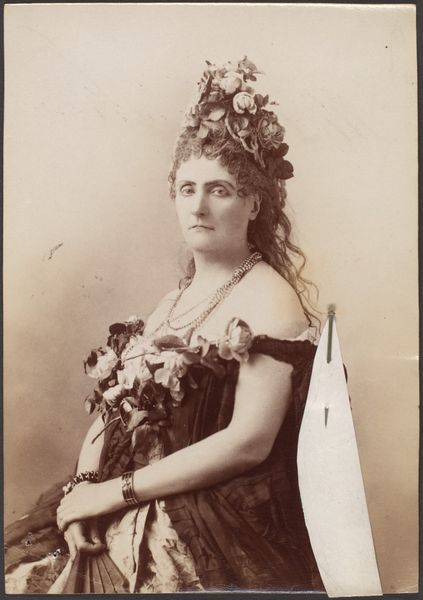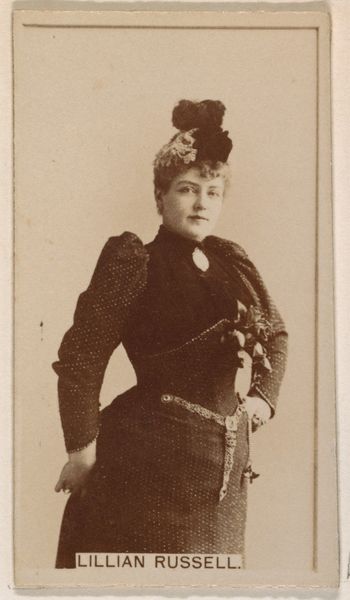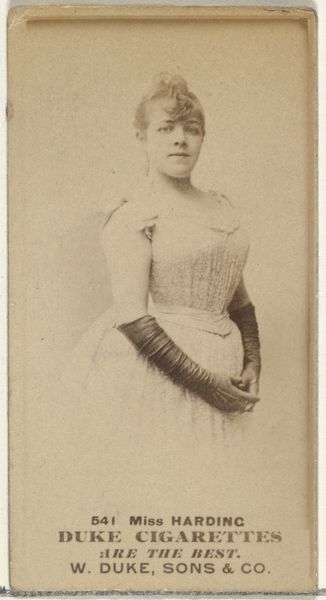
Christine Neilson, from the Actresses series (N245) issued by Kinney Brothers to promote Sweet Caporal Cigarettes 1890
0:00
0:00
print, photography
#
portrait
#
16_19th-century
# print
#
impressionism
#
photography
#
historical photography
#
19th century
Dimensions: Sheet: 2 1/2 × 1 7/16 in. (6.4 × 3.7 cm)
Copyright: Public Domain
Curator: This is a photograph of Christine Neilson, from the Actresses series, printed around 1890 by Kinney Brothers, tobacco manufacturers. Editor: What a wonderfully poised figure! The sepia tones lend her an almost sculptural quality, highlighting the dramatic structure of her gown and jewelry. Curator: Yes, the photographic prints such as these, often came as promotional material in cigarette packs. Series like "Actresses" reflect a growing public fascination with celebrity culture and the expanding role of women in public life. Editor: Look at the detail around her neck, the ornate lace. It almost seems to frame her face and bring forward her gaze. The photographer really captured something beyond her physical presence, no? Curator: Absolutely. Actresses were tastemakers. Kinney Brothers hoped to link the sophistication and glamour of the stage with their Sweet Caporal Cigarettes. The Actresses series not only sold tobacco, it commodified fame, setting a standard of beauty and deportment. Editor: Interesting to see how the lines in the portrait contribute to a sense of balanced grandeur. Her expression is self-assured, meeting the viewer's gaze. You see someone secure of her standing. Curator: Certainly, and one should note the deliberate creation of public personas and marketing, as seen in this historical photography example from the 19th century, and which had influence and echoes in 20th and 21st century media and advertisement contexts. Editor: Looking again, I admire the simplicity and precision within what at first glance seems like just a 'pretty portrait', I mean, so effectively does it use form and light. Curator: Well, through commercial endeavors like these portrait series, women entered the commercial iconography and therefore also the political arena. It represents the subtle yet strategic negotiations for recognition within societal norms. Editor: Yes, viewing the art under the framework of commercial marketing, it takes the meaning of the photograph and makes it far more relevant within history.
Comments
No comments
Be the first to comment and join the conversation on the ultimate creative platform.

